The 10 best performance cars of the 1980s
By Scott Oldham
- Jun 09, 2020
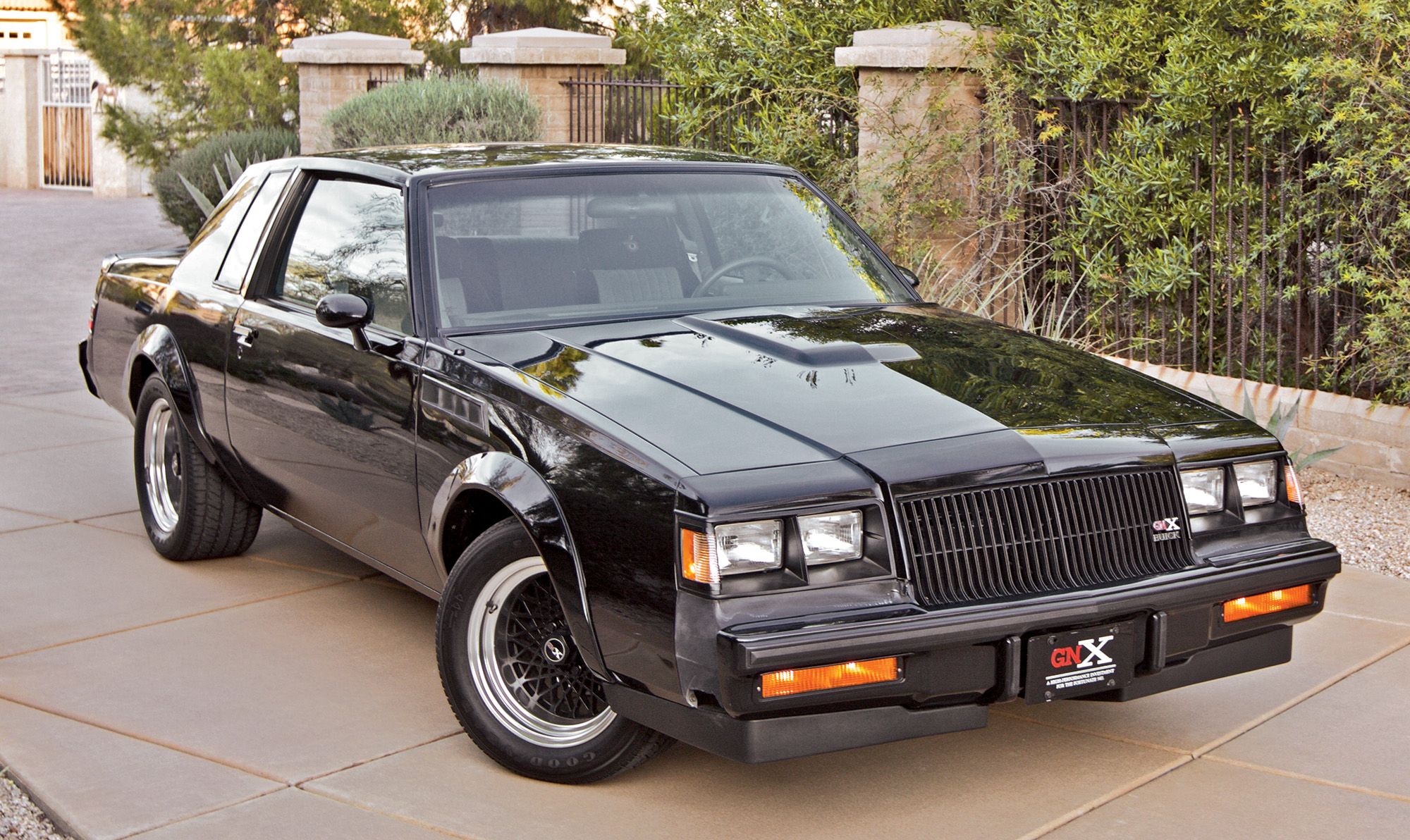
After the automotive funk of the 1970s, everyone was ready for some decent cars. No one was expecting a return to the automotive bliss of the 1960s, not yet, but the baby boomers were now in their 40s and had money to spend. They again wanted vehicles with image and some horsepower. And their children, the Gen Xers, were becoming teenagers. Both generations wanted cool cars.
As the economy improved, so did the cars, which were slowly emerging from the early emissions rules horsepower handicap. The 1979 Mustang 5.0 showed the way for contemporary style and performance, and by the middle of the decade things were happening. The media began calling it the second muscle car era, and terms like "modern muscle cars" were invented to describe Detroit’s new wave of rear-wheel-drive performance cars like the Chevy Monte Carlo SS and Buick Grand National.
But this was a global resurgence. Both the European car companies and Japanese brands were joining the party this time around with cars like the BMW M3, the Mitsubishi Starion TSi, and hot hatches, which were already a thing in Europe when the Volkswagen GTI came to our shores.
Please don’t misunderstand. Many of the cars from the 1980s sucked. And sucked badly, but there are special machines from the decade that have not only stood the test of time, but are now considered classics. These cars were desirable then, and remain so today. Cutting the list down to 10 is no easy task, but all of these are worthy. Think something else deserves a spot? Let us know in the comments.
1983 Volkswagen GTI
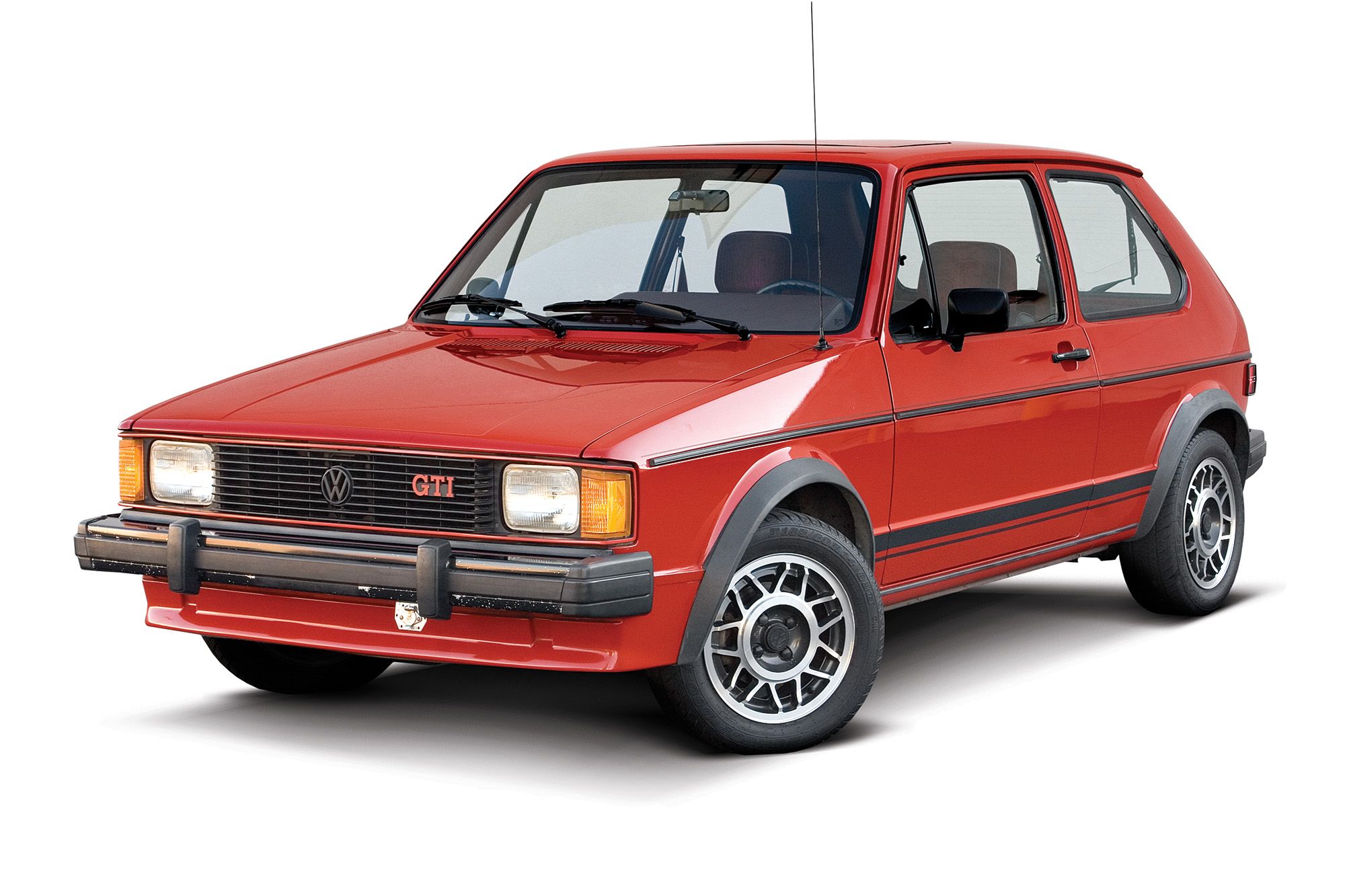
The Golf GTI first began the hot hatch movement in Europe back in 1976, but the model didn’t make it to the United States until the 1983 model year. When VW introduced the Rabbit GTI, it immediately changed the way many Americans thought about performance cars. The GTI was a full-performance makeover of the Rabbit, and VW swapped in stiffer struts, shocks, springs, and bars, before adding wider 14 x 6-inch alloys, wearing 185/60HR-14 Pirelli P6 rubber. Road & Track recorded lateral grip equal to a Porsche 911SC, which was mind-blowing for a front-wheel-drive hatch.
The three-door was powered by a 1.8-liter four, making just 90 horsepower and 105 pound-feet of torque, backed by a five-speed manual. But it only weighed 2,200 pounds, making the GTI quick for its day. R&T recorded a 0-60 mph time of 10.6 seconds and said, “This is performance that gives grown men and women toothy smiles and enormous grins.” Today, of course, the GTI lives on and the sport compact segment remains red hot with alternatives like the Hyundai Veloster R-Spec and N, and Honda Civic Si and Type R.
1984 Ferrari Testarossa
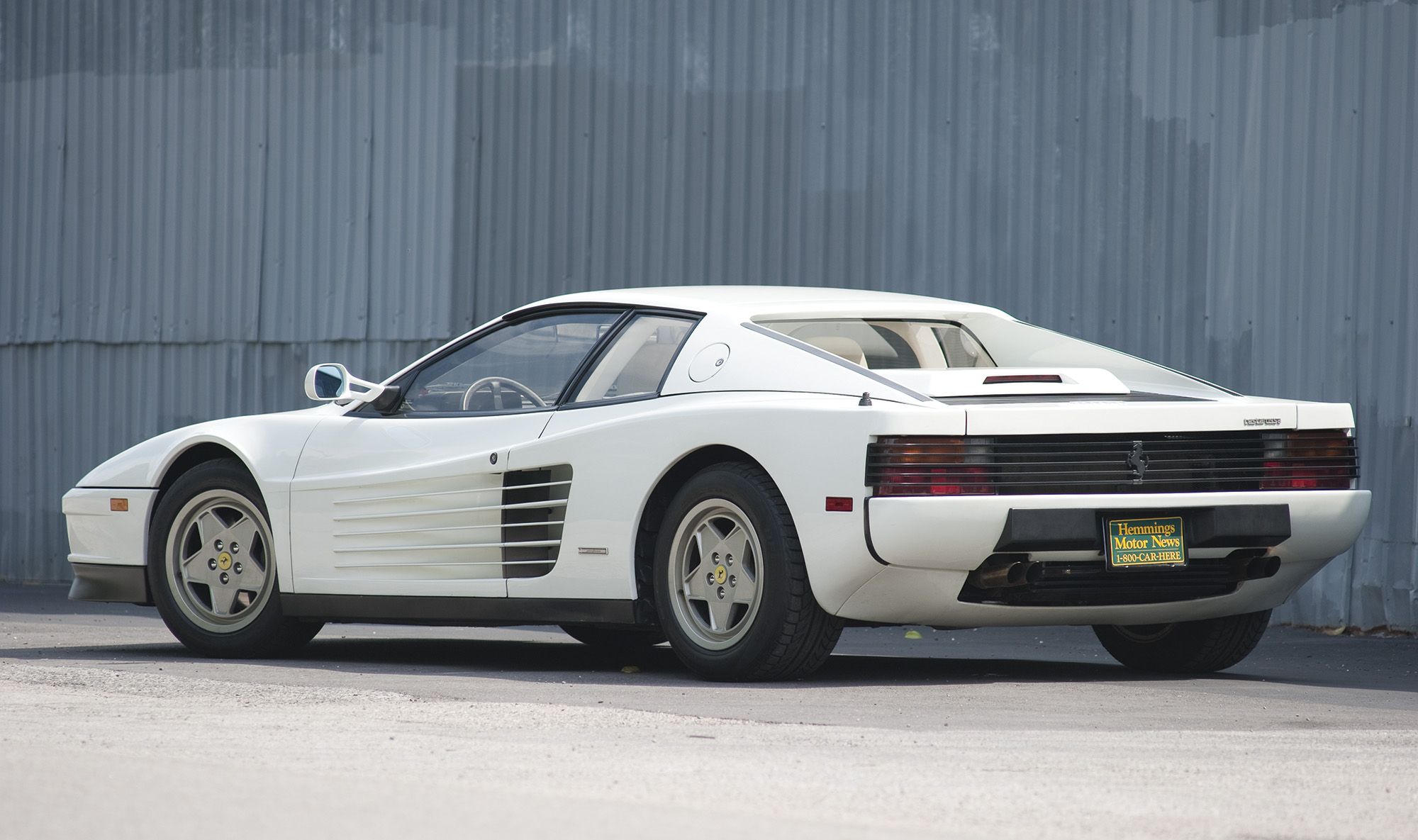
The truth is many of the exotic cars of the early 1980s weren’t really that fast. But there were two big 12-cylinder-powered exceptions, the Lamborghini Countach, which was really a leftover from the 1970s, and the new-for-1984 Ferrari Testarossa. Ferrari's "redhead" was a beast, equally as quick as the more exotic, more expensive, and more exclusive twin-turbo Ferrari 288 GTO. And unlike its predecessor, the 512 BBi, the Testarossa was legal for sale in the United States. Incredibly, its sticker price in 1984 was just under $100,000 (about $250,000 today).
Its mid-mounted, 5.0-liter DOHC all-aluminum flat-12 made 380 hp and 354 lb-ft of torque. Car and Driver recorded a 0-60 mph time of 5.0 seconds and a quarter-mile run of 13.3 seconds at 107 mph. That was scorching fast in 1984. Add in the Testarossa’s 176 mph top speed and it is one of the best-performing cars of the entire decade (and one of the sexiest, too). Those strakes down its flanks and that single outside mirror mounted high on the driver’s A-pillar were pure fantasy. They still are. And, in its day, the Testarossa was praised for its refinement. C/D wrote, “Truth be known, what's wicked-looking on the outside is sweetness and light on the inside. This is the first Ferrari I've experienced that I'd rate easy to operate.” And it wore Goodyear Gatorback tires. Why? Because Mr. Ferrari wanted it that way.
1985 Chevrolet Corvette

Photo via GM Heritage Center.
Today’s C8 owes its very existence to the 1985 Corvette. The fourth-generation Corvette actually debuted in 1984 (pushed back from 1983 due to several delays), but it got good in 1985. That year, Chevy’s engineers tweaked the suspension and installed a new, more powerful engine: a 5.7-liter small-block V-8 with Tuned Port Injection, rated at 230 hp--a big number for the time. Suddenly there was a Corvette that could go 150 mph, run a 13-second quarter-mile and out-handle and out-brake most of the exotic sports cars from Europe, which were far more expensive. And nothing made in America was even close.
The 1985 Corvette wiped away the joke that the anemic, post-smog C3 had turned into. It was a serious everyday supercar for the working man, just like it was back in the 1950s and 1960s. The Corvette was saved from extinction, but more importantly from irrelevance. The world noticed. And the momentum behind America’s sports car was renewed. By 1986 there was a convertible, the first since 1975, and then just a few years later the mighty ZR-1 debuted, which gave Enzo agita.
1986 Porsche 959
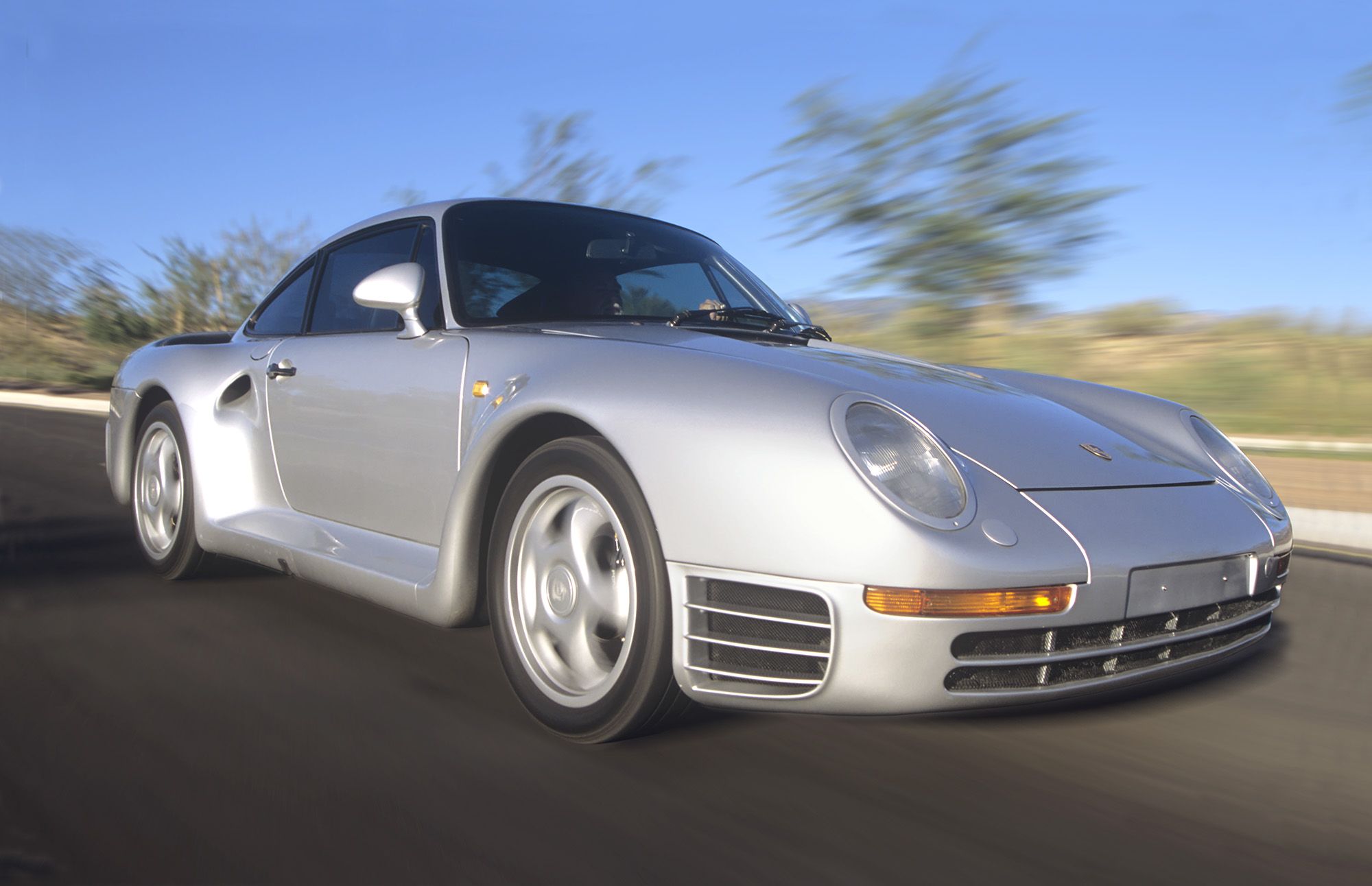
The 959 and the Ferrari F40 were bitter rivals, but they could not have been more different in their approach to performance. The Porsche was a technological wonder, with all-wheel drive, a twin-turbocharged air-cooled flat-six, and a six-speed manual gearbox, that foreshadowed the 911s of the future. It made 444 hp from only 2.9 liters. It was heavier than the Ferrari, at 3,500 lbs, and cheaper at $227,000, but just as potent. Car and Driver recorded a 0-60 mph time of 3.6 seconds and a quarter mile run of 12.0 seconds and 116 mph. Top speed was 190 mph and the lateral grip was recorded at .87g.
Unlike the rough-around-the-edges Ferrari, the Porsche 959 was a leather-lined pussycat. Car and Driver wrote, “…we have just returned from West Germany, where we finally got a chance to drive a Porsche 959 on the street, and the word 'perfect' is difficult to avoid. What single word more accurately describes a car that combines race-car performance with luxury-sedan comfort, that is equally adept at commuting through rush-hour traffic, profiling in jet-set locales, negotiating blizzard-swept mountain passes, and outrunning light airplanes?” Unfortunately, it was not certified for sale in the United States. But a number of wealthy owners, including Bill Gates, successfully lobbied for the "show and display" law that allowed importing certain exotics before the 25-year exemption came around. Such was the significance of the 959.
1987 Chevrolet Camaro IROC-Z
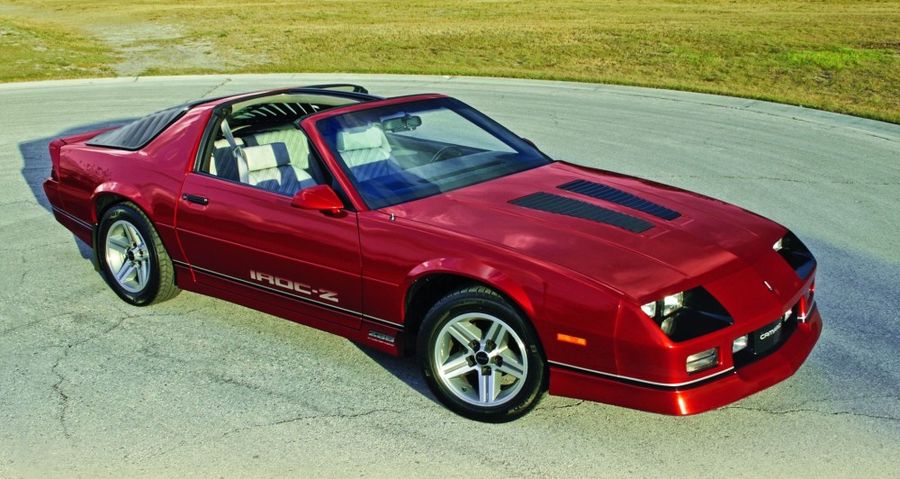
It was Chevy’s involvement in the International Race of Champions that birthed the IROC-Z in 1985, and in the Northeast, where I grew up, these cars were everywhere. They were fast, they handled extremely well on their huge 16-inch Goodyear Gatorbacks, and they looked great, especially at the Jersey Shore with the T-tops removed.
By 1987 there was a horsepower war waging in Detroit, and Chevy's salvo was putting the Corvette’s 225-hp L98 5.7-liter V-8 on the IROC’s option list. The result was the quickest and fastest Camaro since the early 1970s. The 5.0-liter version of the IROC couldn’t keep up with the smaller and lighter 5.0-liter Mustangs in a drag race, even with the available five-speed manual. But an IROC with the 5.7-liter’s 330 lb-ft of torque could run with the Ford, even though Chevy only offered the larger engine with a four-speed automatic. With quarter-mile times in the low 14s, standard four-wheel disc brakes, and a limited slip rear differential, these cars had serious street cred. And they’re fast becoming valuable collector cars today.
1987 RUF CTR
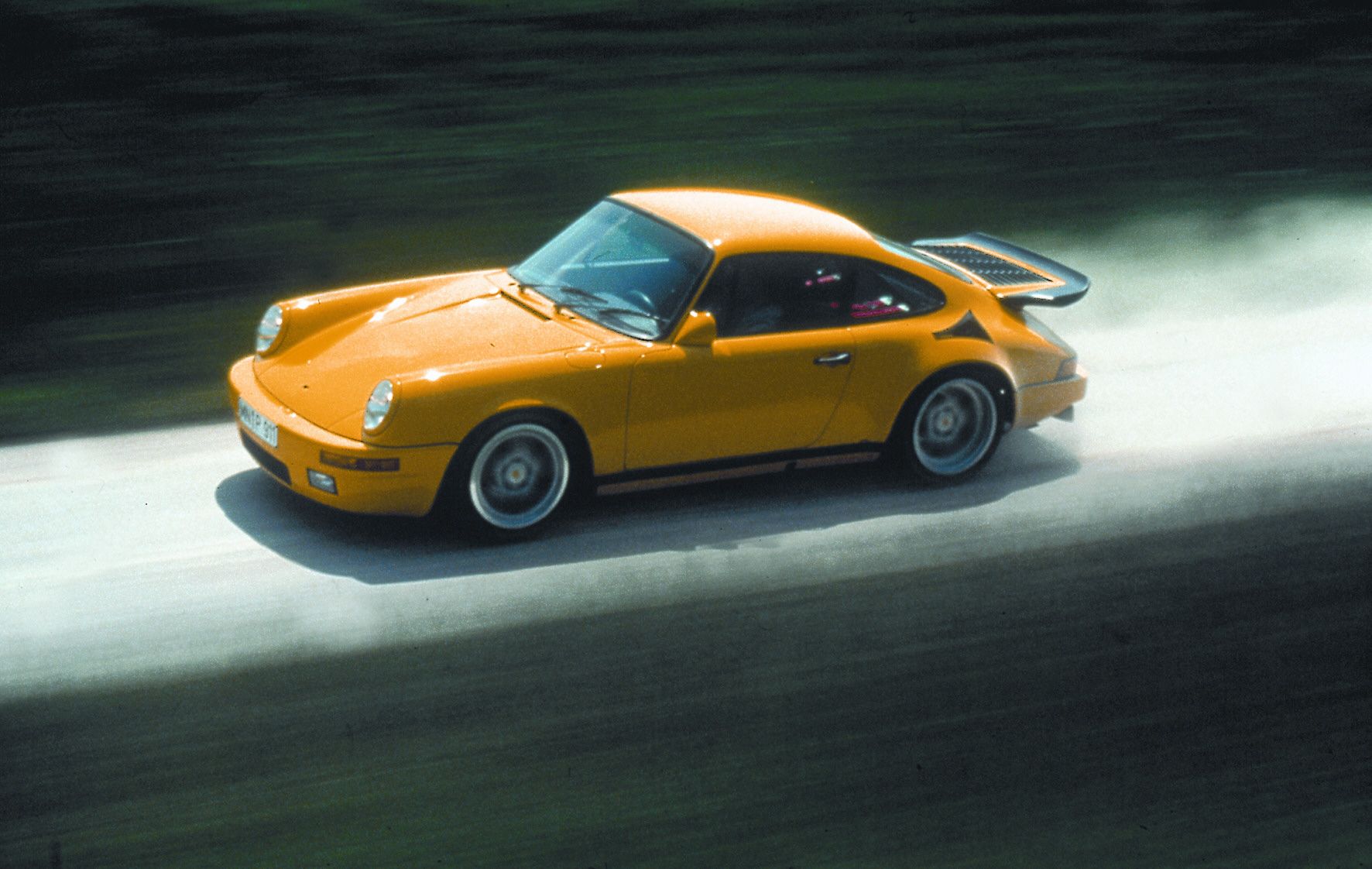
Photo via RUF
In 1987, Road and Track did a top-speed shootout of the fastest cars in the world at Volkswagen's Ehra-Lessien test track in Germany. Phil Hill and Paul Frère did the driving. When the cover story hit newsstands that summer, the RUF CTR Porsche 911 became a legend. The bright yellow, twin-turbocharged, narrowed-bodied beast beat all competitors with a 211 mph run. Nothing else even came close, including Porsche’s own 959. And it was during this test that the car gained its nickname, Yellowbird. Want more? Watch this video of it on YouTube drifting the Nürburgring Nordshleife.
It’s a tuner car, sure, but not a one-off. Twenty nine CTRs were built, each powered by a boosted 3.2-liter flat-six making about 500 hp. Remember, this was 1987. The Corvette was packing less than half that power. The car became so iconic, and is still so revered today, that RUF created an all-new version with 700 hp and a top speed of 224 mph.
1987 Ford Mustang 5.0

The fox-body Mustang with a 5.0-liter V8 debuted in 1979 and it’s undoubtedly one of the greatest cars from the 1970s. But it didn’t really revolutionize street performance and become an icon until eight years later. In 1987, Ford gave the Mustang an extensive facelift and, along with the fuel-injected version of the 302 V-8 it got in 1986, the Mustang 5.0 quickly became a thing. A big thing. It was light. It was fast. And it loved modifications.
Both the GT and LX were packing 225 hp and a tough five-speed manual gearbox. With a few tweaks, the right conditions, and a really good driver, a 5.0 could cover the quarter-mile in under 14 seconds. Only Buick’s bad and black Grand Nationals could hang with that. By the summer of 1987, there wasn’t a drag strip or a street racing haunt in America that wasn’t being overrun by this new breed of Ford’s ponycar. The aftermarket exploded with parts, from blowers to shifters, and there was a gaggle of 5.0 Mustang-dedicated magazines launched to tell the tale and ride the wave. Some, incredibly, survive today.
1987 BMW M5
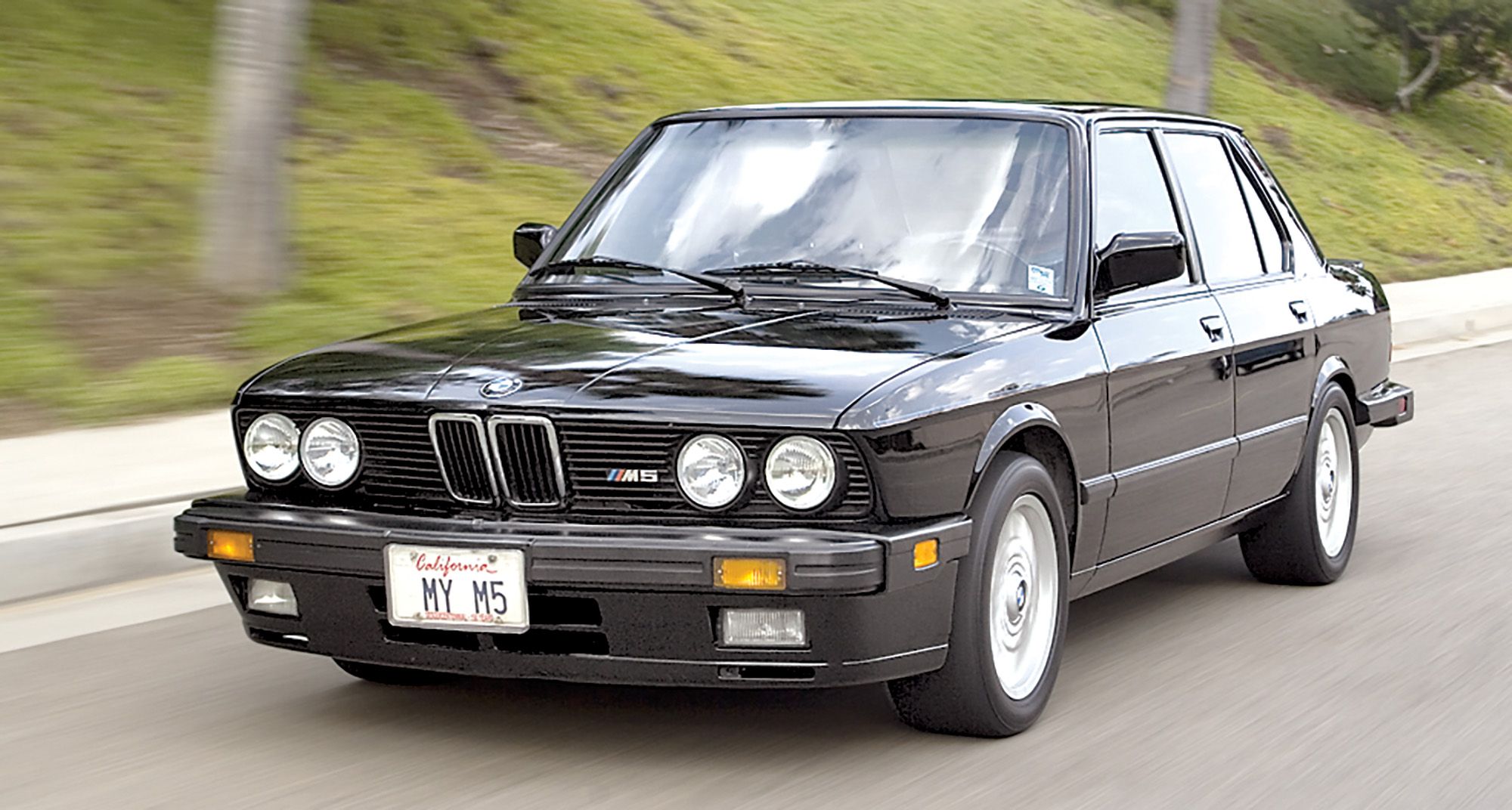
Just as AMG was really starting to do Mercedes-Benz's dirty work, BMW’s in-house M division was quickly figuring out how to take what it learned on the racetrack and apply it to BMW’s street cars. After the M1 mess, which left the company with a supercar that could neither race nor sell very successfully, the company had a big, powerful engine with no home. So, BMW dropped it in the 5 Series sedan and its first true production super sedan, the M5. It also put it in the 6-series coupe that year to create the first M6.
Both packed a 256-hp 3.5-liter inline six that would rev out to 6,900 rpm, backed by a five-speed manual gearbox. Car and Driver tested an M5 and it accelerated from 0-to-60 mph in 6.3 seconds and covered the quarter-mile in 14.6 seconds at 95 mph. Top speed was 147 mph: not quite AMG Hammer numbers, but the M5 cost half as much and was available at any BMW dealership. It was also the best-handling sedan you could buy. Months later, the E30 M3 debuted and the entire auto industry has seemingly been playing catch up ever since.
1987 Ferrari F40
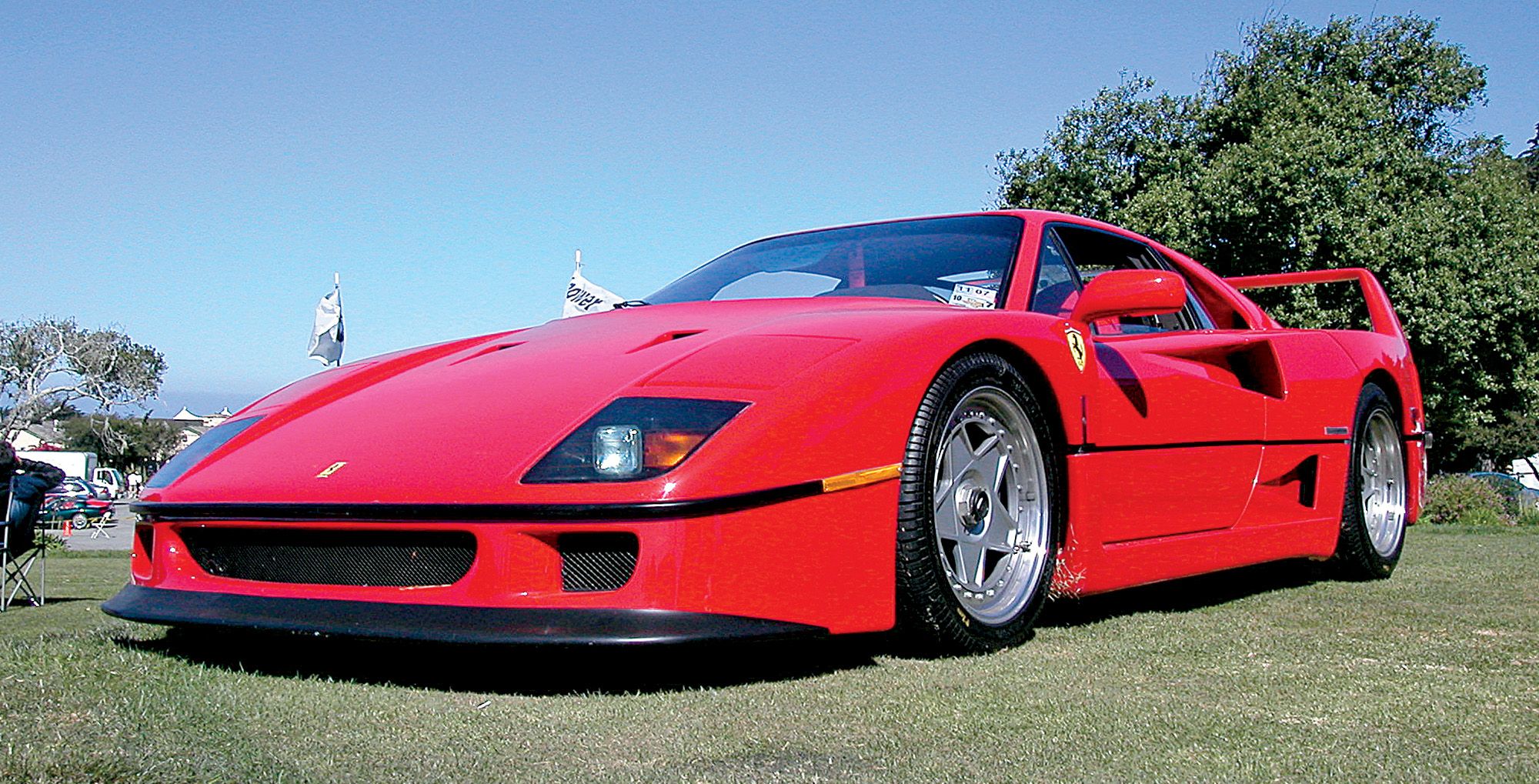
Conceived and created to celebrate Ferrari’s 40th Anniversary, when the F40 debuted in 1987 it was the most expensive, the quickest, and the fastest car money could buy. In the world. And unlike the 288 GTO from a few years earlier, it was available in the United States. Priced at $399,150, the F40 was powered by a twin-turbocharged 2.9-liter DOHC V-8 making an unbelievable 478 hp at 7000 rpm. The bare bones machine, with its gutted interior and Kevlar body panels and structure, weighed about 3,000 pounds.
Car and Driver recorded a 0-60 mph run of 4.2 seconds and a quarter-mile time of 12.1 seconds at 122 mph. The editors also ran the car up to its 197 mph top speed and managed a 1.01g of lateral grip in skidpad testing. And while other Ferraris were getting more and more civilized, the F40 was raw. Practically a race car for the street, with air conditioning being its only vice. "This is an expert's car," said the magazine's editors. “It begs to be put on a racetrack, where you can work up to its limits gradually. The F40's massive power, sudden boost, and incredible grip make various things happen very suddenly on the road. The gold-chain set isn't ready for this car.” Enzo Ferrari died soon after the F40’s introduction. It was the last Ferrari road car he signed off on.
1987 Buick Grand National/GNX

Fact is, you never saw an Porsche 959 on the road or at the local hang out. Or a RUF Yellowbird. Or an F40. Or a Testarossa. These were cars we only saw in magazines and fantasies. If you wanted to own the street in the 1980s, you went out and bought a turbocharged 1987 Buick Grand National or, if you had the scratch, a GNX. It was the quickest and coolest car around. When one pulled into the cruise spot or street racing scene, everyone noticed. The guy behind the wheel always knew he was the one to beat. The Buick was the king. And most wore a license plate frame that read, “We Brake for Corvettes.”
Buick’s turbo V-6 Regal had been around since the early '80s, and the black Grand National version actually launched in 1984. But it got an intercooler in 1986 and power jumped from 200 to 235 hp. That was more than a Corvette. Then, in 1987, it jumped again to 245 hp. A good running example would smash the quarter-mile in the low 14-second range, but a few tweaks easily put these cars into the 13s. Then Buick took it a step further and created the GNX as “The Grand National to end all Grand Nationals.” Only 547 were built. They cost about $30,000, packed 276 hp and were low 13-second cars at the drag strip. Today it remains the most iconic American performance car of the 1980s.
SOURCE: HEMMINGS